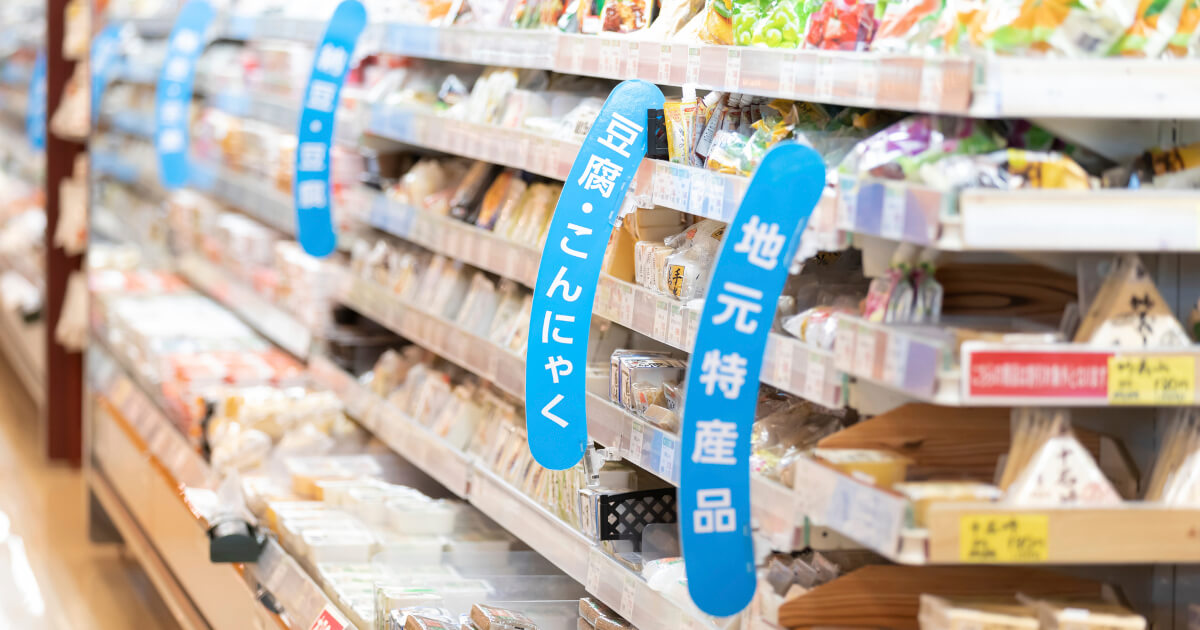
Increase sales with cross-merchandising! How to get customers to buy related products
One of the marketing measures to increase store sales is to ``increase the number of items purchased by each customer and increase the average spend per customer.''
In order to get customers to purchase more products in one shopping trip, it is important to create a sales floor that takes into consideration customer needs, purchasing behavior, psychology, etc., and create an opportunity that makes them want to pick up the product.
This is where we want to introduce "cross-merchandising."
Some store managers and marketing department personnel may be wondering, "What can we expect from cross-merchandising?" and "How should we approach it?"
In this article, we'll explain what cross-merchandising is, what benefits you can expect, and how to implement it.
This article explains the methods and points of store marketing. Please also take a look.
Table of contents [hidden]
- 1.Whatis cross merchandising?
- 2.Benefits of cross merchandising
- 2.1.Benefitsfor stores
- 2.2.Benefits for customers
- 3.Disadvantages of cross merchandising
- 4.Steps for implementing cross-merchandising
- 5.Summary_
What is cross merchandising?
Cross-merchandising is a sales technique that involves displaying related products in combination on the sales floor to stimulate customers' desire to purchase. Also called cross MD (merchandising).
By displaying related products in different categories to the products customers are looking for, the purpose is to induce impulse purchases of products that customers did not originally plan to purchase, leading to increased sales.
▼Example of cross-merchandising in a food department
- Place snacks near the shelves where alcoholic beverages are displayed.
- Display sauce products in the meat department
- Place dressings in the vegetable section, etc.
Cross merchandising is a type of merchandising, which refers to product planning and sales strategies to get customers to buy products.
Visual merchandising (VMD), which visually appeals to products, is explained in the following article.
Benefits of Cross Merchandising
Creating a sales floor that incorporates cross-merchandising creates benefits for both the store and the customer.
Benefits for stores
Some of the benefits stores can expect include:
▼Benefits for stores
- You can improve the average price per customer.
- Leads to improved customer satisfaction
By displaying a combination of related products, it becomes easier to feel the need for the product in addition to the product you originally intended to purchase, encouraging "combined purchases" and "additional purchases." If the number of items purchased per person increases, it can be expected that the average spend per customer will improve and this will lead to an increase in sales.
In addition, by introducing products that are likely to be purchased together in stores and proposing examples of how to use products in combination, the convenience and value of the shopping experience can be improved, which is likely to lead to increased customer satisfaction.
Customer benefits
Benefits for customers include:
▼Advantages for customers
- Prevents forgetting to buy
- You can shorten your shopping time
By displaying related products, you can be reminded of the products you need in a chain, and you can avoid forgetting to buy them. In addition, if you can find the products you need in the same corner, you won't have to walk around the store looking for products, which will save you time while shopping.
Disadvantages of cross merchandising
Depending on how you incorporate cross-merchandising, you may not be able to successfully induce impulse purchases, or you may even find it difficult to shop.
Disadvantages for stores
Disadvantages for the store include:
▼Disadvantages for stores
- May not encourage customers to purchase related products
- It takes time and effort to set up a sales area
If you do not consider the needs of your customers and they cannot select related products even if they feel the need for them, you will not be able to encourage them to buy them together. It is necessary to understand the needs of your customers in advance and then select related products.
Furthermore, even if cross-merchandising efforts are undertaken, if sales do not increase and the expected results are not achieved, the time and effort devoted to creating the sales floor will be wasted.
Disadvantages for customers
Possible disadvantages for customers include:
▼Disadvantages for customers
- I end up buying things I don't need
- Difficult to compare related products
You may end up buying related products on impulse that you had not planned on purchasing, resulting in unexpected expenses. Additionally, there is a limit to the number of related products that can be displayed together, making it difficult to compare and consider multiple products without visiting specialized sections.
Steps to implement cross merchandising
When implementing cross-merchandising in store sales areas, it is important to consider product combinations and how to promote them, taking into account customer needs and usage scenarios.
①Select the main product
Select the main products on the sales floor that you want to encourage customers to buy in bulk or on impulse.
In order to get customers to purchase related products together, you need to select products that are likely to generate a certain amount of sales.
▼Judgment criteria when selecting main products
- Highest sales volume among stores
- The turnover of goods is fast
- Good selection of products in the same category
- The display space is large and it is placed in a conspicuous place.
②Select related products
After imagining how the main product will be used, we select related products to sell in combination. When selecting related products, it is necessary to consider "when, where, who, and how" they will be used, and consider products that can be used together with the main product.
In addition, it is important for stores to not only select related products that they want to sell, but also to consider whether there is a need for them and whether they can stimulate their desire to purchase.
In order to select related products that you can't help but pick up, the key is to perform parallel purchase analysis using POS data that stores shopping history. One of the representative methods of joint purchase analysis is “basket analysis.”
Basket analysis is a method to analyze products that are likely to be purchased together with a specific product in a customer's shopping basket. You can understand the correlation between products based on the following four indicators.
▼ Basket analysis indicators
index |
meaning |
a formula |
1.Support level |
The percentage of customers who purchase both product A and product B at the same time |
Support level = Number of simultaneous purchasers of products A and B ÷ Total number of purchasers |
2.Reliability |
Of the customers who purchased product A, the percentage of customers who also purchased product B at the same time |
Reliability = Number of simultaneous purchasers of products A and B ÷ Number of purchasers of product A |
3. Expected reliability |
The percentage of customers who purchased product B |
Expected reliability = Number of purchasers of product B ÷ Total number of purchasers |
4. Lift value |
A value indicating whether there is a correlation between the simultaneous purchases of products A and B |
Lift value = reliability / expected reliability |
If the final lift value is 1 or higher, it can be determined that products A and B are likely to be purchased at the same time, and the higher the value, the more likely this is.
③Carry out promotional activities
After selecting the main product and related products, display them on the sales floor and carry out promotional activities. We encourage cross-buying by incorporating display methods and displays that easily catch customers' attention and stimulate their desire to purchase.
▼Key points of promotional activities
- Place POP signs on display shelves with catchy slogans that evoke the use of related products.
- Place related products in a place where they are easily visible to the main product.
- Offer bundled discounts on combined products
The following are some display methods that will make related products easier to see on shelves with your main products:
▼ Effective display methods for selling related products
Display method |
overview |
extended display |
A method of displaying items by hanging wire shelves on the second or third shelf level and extending them beyond the front of the display shelf. |
Wing Display |
Displaying baskets or boxes on the ends or sides of shelves |
hook display |
A method of displaying products by hanging them from hook-type fixtures installed on shelves |
This article provides a detailed explanation of planogram optimization.
summary
In this article, we explained the following about cross merchandising.
- Cross merchandising overview
- Advantages and disadvantages for stores and customers
- Steps to implement cross merchandising
By creating a sales floor with cross-merchandising in mind, you can increase sales by improving the average spending per customer, as well as improve customer satisfaction by making shopping easier and improving the experience.
When putting this into practice, the key points are to select main products that are expected to have stable sales, conduct side-buy analysis to select related products that meet customer needs, and increase purchasing intent through promotional activities.
Additionally, in order to create a sales floor that can encourage bundling purchases, it is also effective to analyze visibility and impressions to see which parts of the shelves customers are paying attention to.
Konica Minolta's "EX Kansei" is based on cutting-edge image analysis technology and emotional brain engineering, and can quantitatively analyze and evaluate the attention and impression of a sales floor. We help improve sales by presenting things from the customer's perspective.
For detailed service details, please check this document.





